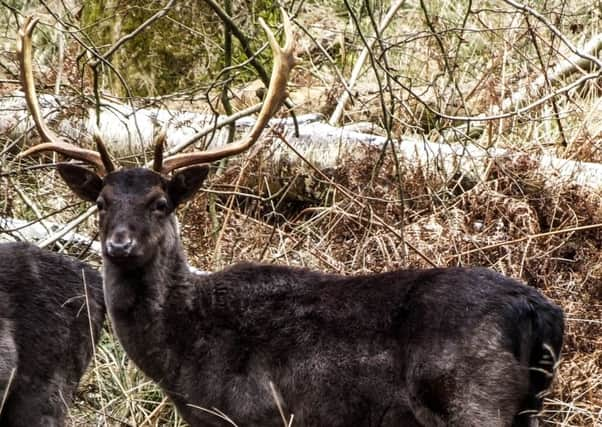National Trust’s deer cull plans could ‘decimate’ population on Ashridge Estate


The former volunteer stalker, who wished to remain anonymous, said he is worried about the new staff members’ potential lack of training for the job.
His worries include the planned methods to kill the deer which he says are easy to get wrong, and that bosses plan to kill too many of the animals for the population to continue to thrive.
Advertisement
Hide AdAdvertisement
Hide AdHe is also concerned for the safety of human visitors, particularly if those carrying out the cull aren’t familiar with the area.
The National Trust – which owns the 5,000-acre estate – has rebuffed the claims, saying all those chosen for the job have both Level 1 and 2 Deer Management Qualifications (DMQs).
The volunteer, who grew up on the estate, said: “They are going to kill about 680 fallow deer, and the head count of all the deer that live there is 950 I believe.
“They’re going to wipe out two-thirds of the population and it’s a misguided policy, it’s fundamentally flawed.
Advertisement
Hide AdAdvertisement
Hide Ad“It’s going to have a huge, long-term impact if they don’t know what they’re doing.”
The volunteer, who worked with a number of other stalkers, said: “We had more than 50 years experience between us and it’s always been a deer park historically.
“But the Trust is treating it like an amusement park, putting more car parks and paths in, and encouraging more visitors.
“Visitors make it difficult for the deer to settle, as they scare them off and this means they’re more likely to run across the roads.”
Advertisement
Hide AdAdvertisement
Hide AdHe added: “When they asked us to cull more than 600, we said enough is enough.
“The deer have been made the scapegoats, because the Trust says they’re eating rare flowers and plants, but it’s their habitat that has been lost because the Trust has cut down a lot of the foilage.”
The volunteer, who has lived in Frithsden and Nettleden, said that voicing his concerns was ‘not a case of sour grapes’, but came from concern for the animals and the safety of the public.
He explained that killing a deer is not about open-firing on a group of the animals, but is a much more discrete and precise process.
Advertisement
Hide AdAdvertisement
Hide AdHe said: “You can’t go around killing the largest stags and bucks, because they know where the food is, the whereabouts of the best trails, and where the safest places are.
“If you kill them that could have a devastating impact on the remaining deer, because they will starve and run around all over the place.
“The bullets we use can travel up to seven miles, so you always have to make sure you shoot the deer with a background, either from a hill or in front of a tree.”
“We have worked very hard over the years to achieve the balance.”
Advertisement
Hide AdAdvertisement
Hide AdSusie Mercer, general manager of the Ashridge Estate, rejected the claims.
She said: “Our primary concern is to maintain the deer herd on the Ashridge Estate in a strong and healthy condition, and to allow the natural plant life of our beautiful open spaces and woodlands to thrive.
“If numbers of deer increase unchecked, they have less food, which puts them at risk of disease and malnutrition.
“Left unmanaged, deer can damage arable crops, young trees and wild flowers, transforming landscapes and endangering the habitats of many other creatures.”
Advertisement
Hide AdAdvertisement
Hide AdShe added: “The new contractor is able to employ up-to-date methods to more accurately assess the size of the herd and their roaming patterns.
“This data is being used to inform our cull targets and return the herd to a sustainable level. Once this has been achieved, we look forward to being able to return to a maintenance cull.
“We are confident that the deer will continue to be managed in a professional and effective manner and that our approach has been endorsed at every level within the National Trust and by our external advisers and the Deer Initiative of England and Wales.”